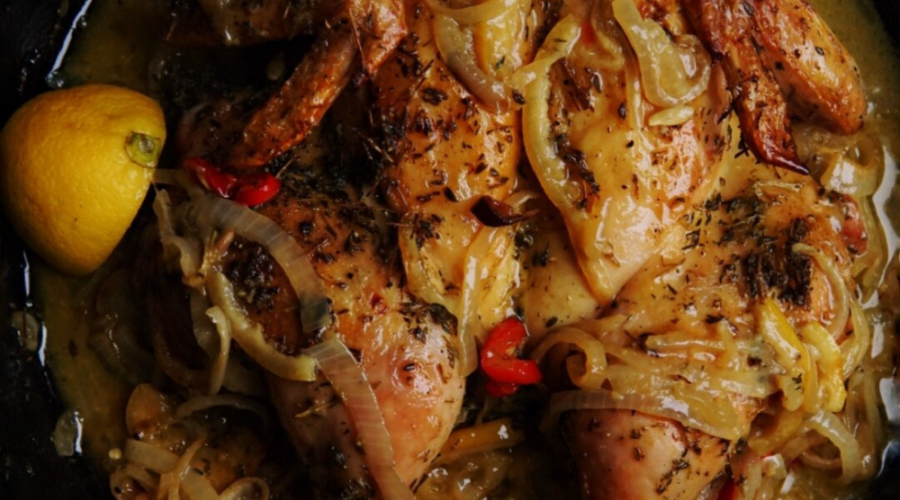Travelling to Africa is an unforgettable experience. Each country has its unique history, traditions, languages, cultures, landscapes, flora, and fauna.
Despite the immense differences in each corner of the continent, they all radiate a tangible and symbolic warmth that permeates one’s being: African foods. It is healthy with many flavours, so it’s no surprise with global health awareness, African foods are becoming more popular around the world. This is all thanks to restaurants dedicated to serving traditional African cuisines.
Some of the best restaurants that serve African Foods
Waly-Fay, a Senegalese restaurant, is located in the centre of Paris. The restaurant’s food is primarily Senegalese, with French, Portuguese, and North African touches. Etiope Nuria is in Madrid, Spain, an Ethiopian eatery that serves Ethiopian cuisine and tea and coffee. The restaurant’s popular drink is tej, a sort of honey wine. Kiza is an all-African food and entertainment establishment that combines excellent dining with music, fashion, art, and entertainment. It has a pan-African-themed cuisine that includes Senegalese Yassa chicken, Tanzanian Pilau Moroccan lamb tagine, and South African boerewors.
Let us look at 10 African foods that are taking over the world.
1. Jollof Rice, Nigeria
The name Jollof comes from an ancient kingdom in the Gambian region. Now a staple in West African kitchens, its rich deep red with enticing flavour is taking over world cuisines. The dish’s main ingredients are rice, tomatoes, onions, curry powder, goat meat, nutmeg, chicken, and beef.
To prepare the dish, the cooks start by blending the tomato mixture to make the stew mixture. Then, they pour the blended mix into the pan and add seasoning. While cooking, they wash the rice, add it to the boiling stew, and mix it well.
The restaurants that serve the rice best are Cafe Songhai in Atlanta, Bukom Cafe in Washington Dc, and Accra in New York City.
Also, read: Jollof: A Tale of Two Nations
2. Piri Piri Chicken, Mozambique
One of the oldest fusion recipes that we still have with us today is Piri Piri. It is a Portuguese barbecue chicken and dates back to the 1400s. Portuguese settlers discovered the Bird pepper, or Piri Piri pepper when trading with the indigenous population in the 1400s. They used this pepper, combined with garlic, red wine vinegar, paprika, and other imported European foods, to make a marinade for chicken.
The main ingredients are chicken, dried hot chillies, red wine vinegar, and smoked paprika. Almost all non-veg restaurants serve peri-peri chicken.
3. Bunny Chow, South Africa
The Indian bunny chow recipe is in Durban’s “hall of food”. A 9- year old restaurant, Patel’s vegetarian refreshment room is famed for its bunny chow recipe. The vegetarian dish is a bun, a supposed derivative of Bania, the term used by Indian migrants. The dish consists of hollowed-out bread that makes room for a curry. The owner, Manilal Patel, narrates that the dish started at a time when racial discrimination was rampant. The restaurant’s first owner served them food in bowls outside the restaurant. He did this to retain customers. He substituted hollowed-out bread halves for them, and thus bunny chow was born. The dish has now evolved after blending with the local cuisine. Bunny Chow is a taste of India in South Africa.
4. Yassa, Senegal
The Casamance region in southern Senegal is home to this dish. Yassa is a hot meal made with onions lemon and mustard and either marinated chicken or fish. Lamb and fish are also used in Yassa. In Senegal, Chez Loutcha, Djembe, and Chez Fatou are the best places to try the meal.
5. Koki, Cameroon
Cameroon’s local delicacy is koki beans. Koki Beans have a cake-like appearance and are yellow and fluffy. Black-eyed beans are the principal ingredient of Koki, which are native to West Africa. The Sorento Restaurant, Le Safoutier Restaurant, and La Fourchette are the greatest restaurants for this cuisine.
6. Chicken Muamba, Angola
Moambe chicken, a savoury chicken dish famous in Central Africa, is Angola’s national cuisine. The chicken, spices, and palm butter combination give a stew-like consistency. Several regional versions across the Congo and Central Africa, so the dish is prevalent beyond the continent. Chicken, tomatoes, garlic, and chilli powder/peppers are the main ingredients.
7. Fufu, West and Central Africa
It is a West African dish with origins dating back to the 16th century. Ghana was where Fufu was discovered and introduced to Africa by Portuguese traders from Brazil. It is popular because it is delicious, simple, filling, and quick to serve. Cassava is the main component of this recipe. It’s a dough-like dish that’s popular in West African cuisine. It is also famous in Liberia, Togo, Nigeria, Cameroon, the Democratic Republic of Congo, Gabon, and Angola.
8. Matoke, Uganda
Matoke, which translates to “banana flesh, ” is Uganda’s national food in English. Moreover, it is a member of the “East African Highland bananas”, which is a family of bananas.
Patio Italian Restaurant, Piato Restaurant, and Haandi Restaurant are a few restaurants that serve the dish.
9. Egusi Soup, Nigeria
A true West African classic is Egusi soup. Egusi soup is a thicker soup made from the seeds of plants such as squash, melons, etc., which are dried and pulverized into an essential element in many West African meals.
Egusi is known as akatoa or agushi in Ghana. .
10. Koshari, Egypt
The British brought this meal to Egypt in the late 1800s because it was inexpensive and satisfying. The dish’s main ingredients are rice, lentils, macaroni, tomato sauce, and cumin.
The dish is layered with pasta, grains, and brown lentils. Garlic juice is a popular topping, but garlic vinegar and spicy sauce are optional.
So, don’t stop yourself from trying out these fantastic African foods if you get a chance.
Also, read 3 of the best fish recipes from Africa.





